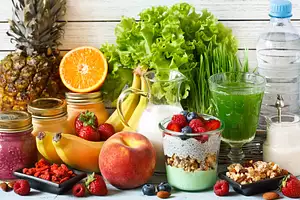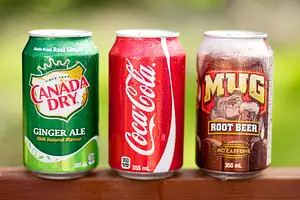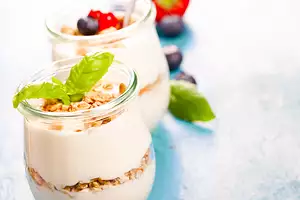Snacks that include fresh fruits and vegetables, whole grains, fiber, and a reasonable amount of fat are integral parts of a well-rounded diet. According to the National Academy of Nutrition and Dietetics, a healthy snack should be low in sugar and fat, full of fiber, and contain a maximum of 200 calories. These snacks can help maintain a healthy weight and curb hunger between meals.
Unfortunately, many of the convenient, prepackaged, single-serving snacks available in grocery stores and advertised as “healthy”, “whole grain”, or “all natural” are anything but! Instead, these snacks are full of hidden sugar and fats. The National Academy of Nutrition and Dietetics recommends reading the ingredients and nutrition label on snack food packaging to find out what they contain.
Here is a quick look at the actual nutritional value of eight of the most common “healthy” snacks.
“Real Fruit” or “Real Fruit Juice” Popsicles
The Problem: The high amount of sugar found in these frozen treats is not out-weighed by the fruit or fruit juice they might contain. They are also missing the fiber found in a whole piece of fruit.
A Better Choice: Fresh or frozen fruit can be pureed then frozen in popsicle molds or single-serving containers. The result will be a delicious and refreshing summertime treat that is also low in sugar and high in fiber.
Fruit Leather
The Problem: Often labeled as “full of vitamin C”, “organic”, or “all natural”, fruit leather is full of sugar, but not fiber.
A Better Choice: For a convenient alternative, try prepackaged single-servings of dried fruit. Raisins, prunes, or apricots are naturally sweet and full of fiber.
Vitamin-C Enriched Fruit Snacks
The Problem: There is a reason fruit snacks are reminiscent of gummy bears. While some brands do contain fruit juice, they also have added sugar or corn syrup.
A Better Choice: Eating an orange or drinking a cup of orange juice is a great way to get more vitamin-C.
Cheese Crackers
The Problem: They might seem like a good alternative to potato chips, but cheese crackers are still full of fat and sodium.
A Better Choice: Reach for whole grain crackers and a slice of low-fat cheese or a serving of a low-fat, natural nut butter. Be sure to check that products labeled whole grain as the first ingredient and do not include enriched flour.
Whole Grain Corn Chips
The Problem: Some whole grain corn chips are full of sodium, but contain very little fiber or actual whole grains.
A Better Choice: Read the corn chip package to be sure that whole grain is the first ingredient listed. They should also contain a healthy amount of fiber and no more than 5 milligrams of sodium per serving. Pair them with a serving of freshly prepared salsa or low-fat hummus for a nutritious treat.
Beef Jerky
The Problem: While high in protein, beef jerky is also usually packed with sugar and sodium.
A Better Choice: Low-fat string cheese and single-serving packages of almonds, mixed nuts, or tuna are healthy and convenient sources of protein.
Cookies Enriched with Nutrients
The Problem: Extra vitamins and minerals are added to these cookies to make them healthier. However, they still contain the same amount of sugar and fat as a classic cookie. The idea that this cookie is a healthy alternative has led many to eat more cookies than they regularly would.
A Better Choice: Indulge in a sensible serving of classic cookies as an occasional treat.
Yogurt Parfaits
The Problem: The granola and fruit compote included in prepackaged parfaits are often high in fat and calories and full of added sugar. They are also usually made with full-fat yogurt.
A Better Choice: Make a parfait at home with low-fat Greek yogurt and sliced or pureed fresh fruit.
To enjoy snacks as part of a well-balanced diet, simply read through their nutrition labels and ingredient lists to make an informed and nutritious choice. Better yet, prepare alternatives at home using your favourite flavours and healthy ingredients.
SOURCES: https://www.livescience.com/36513-healthy-unhealthy-snack-food.html










Comments